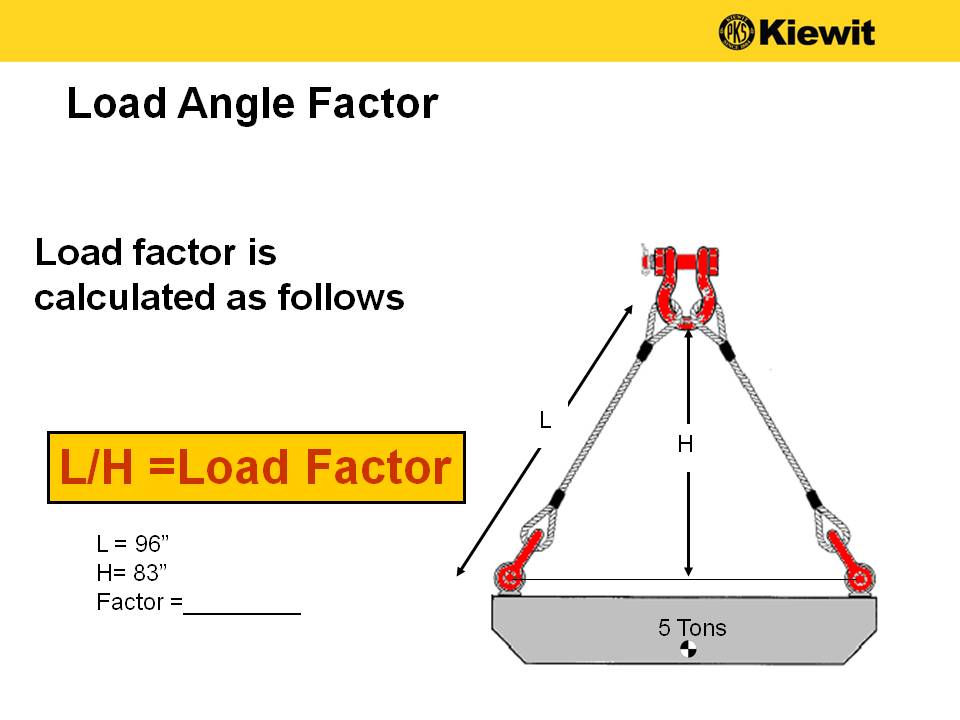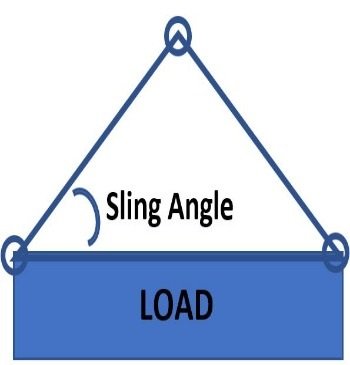

You can clearly see the significance in this case.

The multiplier corresponds to the given angle. The engineering folks have worked out the forces for various angles and assigned a multiplier to each angle. It is very easy to calculate the tension for slings used at an angle. In this case the slings could be overloaded by 100 percent!!! The same tension is applied to the other hardware in the system and will likely be overloaded as well. However, if the slings are at 30-degrees, the force applied is 10,000 pounds for each leg. It is intuitive to think each sling will have half the total load. Assume your two slings have a capacity of 5,000 – pounds each and your load is 10,000 pounds. In this case, it is very easy to overload the slings and rigging gear. However, if you are using the slings at or near capacity it is important to consider the sling angle effect. On light loads when slings are at a low percent of capacity the effect is not critical. Gravity is pulling the buckets down the same as it was before but your arms will feel the force increase. Now, try lifting your arms up, moving the buckets away from your body. It is not that difficult to hold them this way. When the buckets are by your side your arms will be vertical.

To demonstrate this effect, imagine holding a one-gallon bucket of water in each hand. The sling attachment points are located at an equal distance from the object center of gravity. The illustration below clearly shows the effect of specific sling angles on capacities. When slings are used in a bridle at an angle, the angle increases the force applied to each sling and the rigging hardware such as shackles, spreader bars, links and collector rings. One of the most overlooked considerations when designing a rigging system is sling angles.


 0 kommentar(er)
0 kommentar(er)
